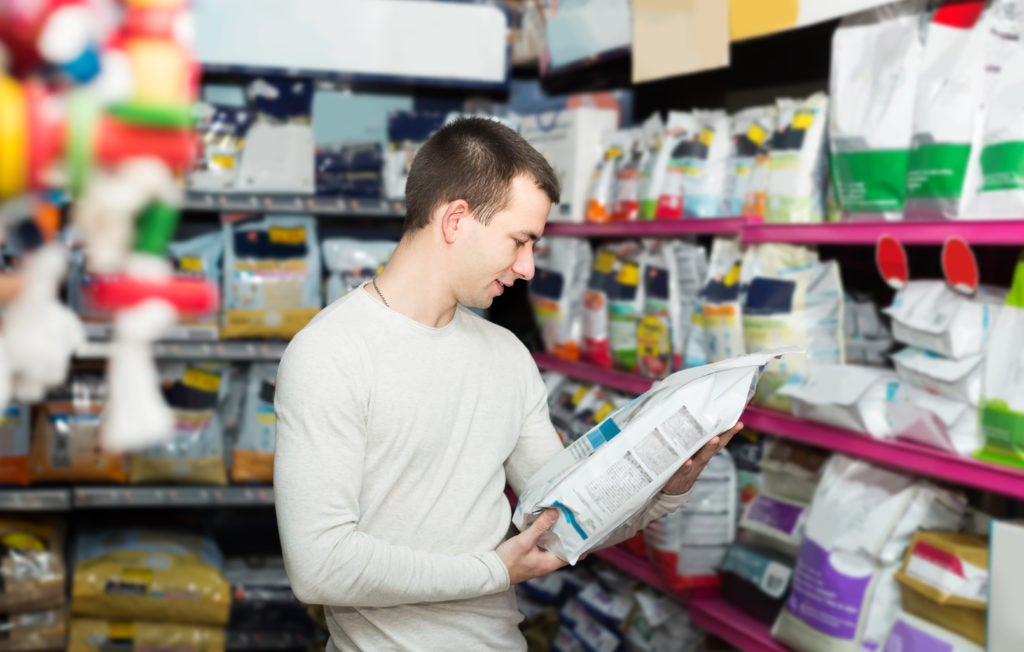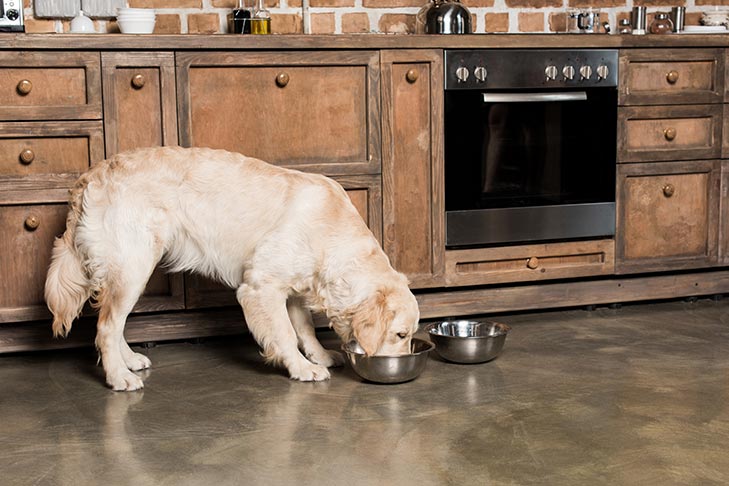Maybe your veterinarian has recommended a prescription diet, or perhaps you’ve simply decided to try a new brand. Whatever the reason for the switch, changing your dog’s diet is more complex than simply pouring the new food into a bowl. In order to avoid upsetting your dog’s stomach, you will need to transition to the new food the right way. Here’s the best way to switch dog foods.
How to Change Your Dog’s Food
Switching your dog’s food abruptly can cause gastrointestinal upset such as vomiting, diarrhea, and a decreased appetite. Any time you decide to change your dog’s food, you should transition to the new diet gradually in order to give your dog’s system time to adjust to the change. Ideally, these transitions should happen over 5-7 days. During this transition, you will gradually incorporate more and more of the new food by mixing it with your dog’s current diet. For most dogs, a good diet transition will look like this:
- Day 1: 25% new diet and 75% old diet.
- Day 3: 50% new diet and 50% old diet.
- Day 5: 75% new diet and 25% old diet.
- Day 7: 100% new diet.
Some dogs with sensitive stomachs, food allergies, or other gastrointestinal diseases may need an even longer transition period. The key to a good diet transition is monitoring your dog’s individual response. If, at any point during the diet transition, your dog displays concerning signs such as changes in appetite, vomiting, or diarrhea, you should proceed more slowly. And if you have transitioned gradually and your dog is still experiencing stomach upset, it is best to consult with your veterinarian. In some cases, it may be necessary to choose a different diet.

Adverse Food Reactions in Dogs
An adverse food reaction is a blanket term used to describe a number of different food-related illnesses in dogs such as food allergies, food intolerance, and other gastrointestinal diseases. Many people will describe their dogs as having “food allergies” but this is not always accurate. True allergies involve a very specific response from the dog’s immune system — and this is not definitively diagnosed in many cases. Thus, it is more accurate to refer to these events as adverse food reactions.
Adverse food reactions can present with gastrointestinal symptoms, cutaneous symptoms, or a combination of the two. Gastrointestinal signs of an adverse food reaction include nausea, vomiting, diarrhea, and changes in appetite. Cutaneous symptoms include a wide range of signs such as itching, skin inflammation, hair loss, and many different types of rashes. There are many other illnesses that can cause similar symptoms, so it is important to have your dog evaluated by your veterinarian if these symptoms occur.
If your veterinarian suspects your dog is having an adverse food reaction, they may recommend performing an elimination diet trial. This means your dog will eat only a prescription hypoallergenic diet and no other food sources for at least eight weeks. If your dog’s symptoms resolve during the diet trial, this can be a sign that food was the culprit. At the end of the eight-week trial, your veterinarian may also perform a challenge trial by reintroducing certain foods into your dog’s diet to see if they provoke another reaction. The challenge trial can help you and your veterinarian determine exactly which foods are problematic for your dog, so you can avoid them in the future.

The Proof is in the Poop!
The best way to monitor your dog’s digestive health is to pay attention to the quality of the stool. While minor variations in stool color and consistency are normal, any major changes can indicate a problem that needs to be addressed. A great way to evaluate your dog’s stool is to use a Fecal Scoring Chart. An ideal fecal score is 3–4. Lower numbers may indicate dehydration or constipation, while higher numbers are indicative of gastrointestinal upset, which can be due to a variety of factors. If your dog’s stool is consistently outside of the normal range, it is recommended that you consult your veterinarian regarding your dog’s digestive health.
How to Choose a Dog Food
Choosing an appropriate diet for your dog is a complicated process. The sheer number of dog food options available is overwhelming. Unfortunately, there is no one diet that is “best” for every dog. Just like humans, dogs are individuals and their dietary needs vary depending on factors such as age, health, and personal preferences.
To make the process even more complicated, there are also a lot of myths about dog food on the internet. Many people fall victim to advertising campaigns or scare tactics warning them away from commercial dog foods. Fortunately, the World Small Animal Veterinary Association has published a guide entitled “The Savvy Dog Owner’s Guide: Nutrition on the Internet” to help pet owners decipher fact from fiction when doing their own research about dog food.
Learning how to read a pet food label can also help demystify the process of choosing a dog food. The information on a pet food label is guided by the Association of American Feed Control Officials (AAFCO). AAFCO is responsible for establishing definitions for many of the terms you will find on a bag of dog food. Understanding these labeling requirements can make it easier to identify which products are best for your dog. Look for the words “complete and balanced diet” on the label.
Finding the best food for your dog can be a lengthy process, but with the right tools and a gradual transition, you can ensure the switch is successful. During the transition, be sure to monitor your dog’s appetite, behavior, and stool quality to help determine whether the new diet is the right choice for your dog. As always, your veterinarian is your best resource for information regarding your dog’s health and nutrition.

